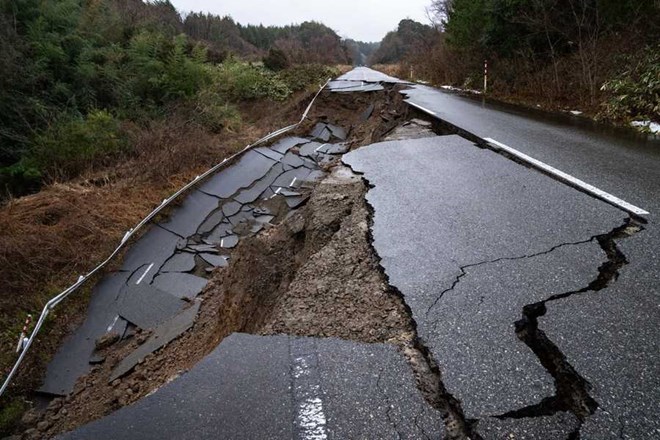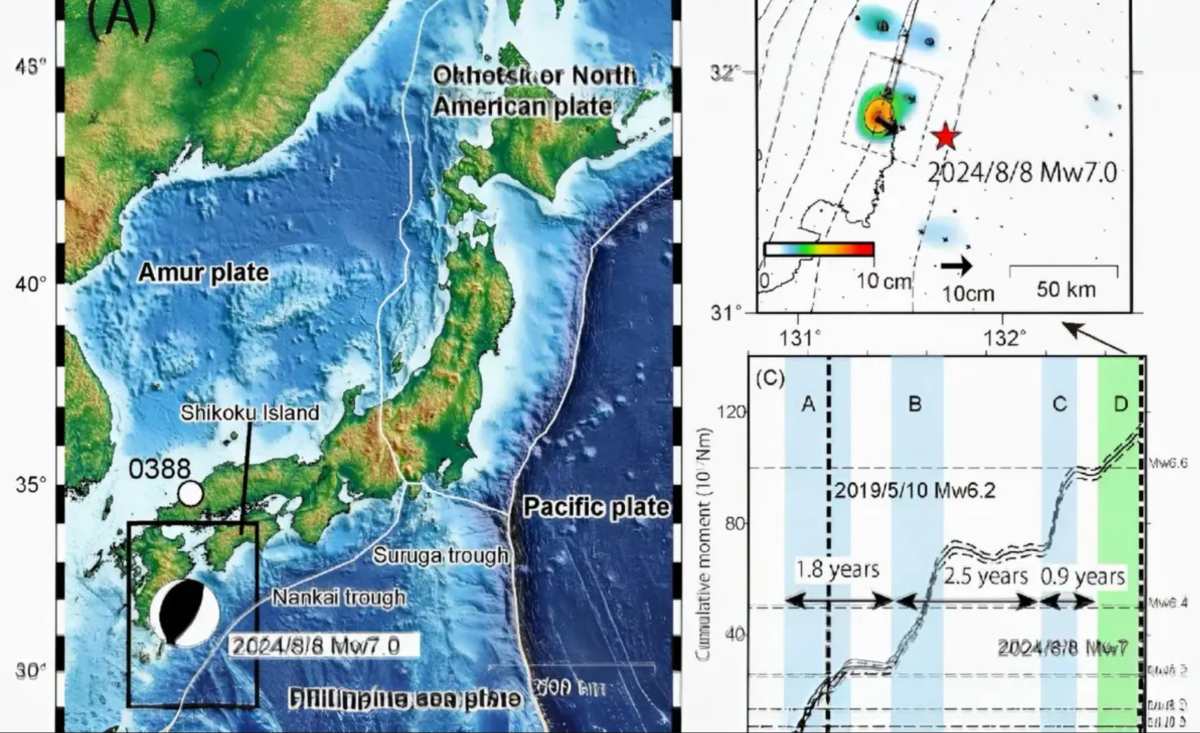
Roads damaged by an earthquake in Ishikawa, Japan, January 2, 2024. Photo: Xinhua
A strange earthquake has just been recorded by scientists at the bottom of the Pacific Ocean, where the Philippine Sea Plate is quietly diving beneath Japan.
Unlike the usual rumbling earthquakes, this earthquake "crept" for weeks, moving millimeter by millimeter in silence - which could be the key to understanding and predicting future tsunamis.
This rare phenomenon occurred in the shallow part of the Nankai Trench, an area that has caused many large earthquakes and deadly tsunamis in Japan. First recorded in the fall of 2015 and reappeared in 2020, each slow slip stretched for dozens of kilometers along the fault zone, starting about 50km from the Kii Peninsula and gradually moving towards the ocean trench.
What's special is that no seismic or GPS equipment on shore sensed this phenomenon. Only a network of underground monitors—“eyes and ears” buried hundreds of meters below the seabed by Japan—is sensitive enough to pick up on such subtle movements.
“It’s like an internal wave traveling along the interface between two tectonic plates,” said Josh Edgington, who analyzed the data as a postdoctoral fellow at the University of Texas Geophysical Institute.

Slow-motion earthquake detected in Nankai tsunami zone. Photo: Japan Meteorological Agency
The monitoring system is part of Japan’s ambitious scientific drilling program, aimed at plugging a “blind spot” in global earthquake monitoring. The sensors on the seafloor allow scientists to track the buildup and release of tectonic stress in real time.
If the area regularly releases energy as slow slip, it could act as a natural “shock absorber,” limiting the severity of future earthquakes and tsunamis. But if the deeper zone remains locked, the risk of a magnitude 8 or 9 earthquake—like the one that killed more than 1,300 people in 1946—remains intact.
While the Nankai quietly groans, a similar fault zone in the Pacific Northwest, called Cascadia, is dead silent. This has raised concerns among seismologists that a silent fault could be storing energy for a super-slip, powerful enough to trigger a magnitude 9 earthquake and a full-blown tsunami.
The team is calling for similar seafloor monitoring systems to be deployed in Cascadia, Chile and Indonesia - other hotspots in the Pacific "Ring of Fire".
In another development, nearly 900 earthquakes that have occurred in a row in the past 10 days in the Tokara Islands region of Japan have once again raised concerns about the July disaster prophecy.
A comic book by artist Ryo Tatsuki published in 1999 is causing a wave of panic after the author "prophesized" that a terrible earthquake and tsunami would hit Japan around July 5-7.
In the face of growing concerns, Director of the Japan Meteorological Agency (JMA) Ryoichi Nomura had to speak up and affirm: “With current technology, there is no way to accurately predict when an earthquake will occur.” He called on people to always be well prepared, but not to panic over unverified information./.